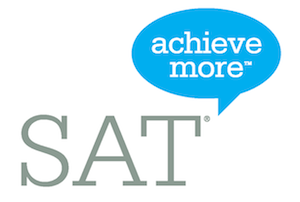The revised SAT is slated to debut in March 2016, and each change has been made to test the knowledge and skills that are essential for success in the real world, according to a press release from the College Board.
Palo Alto High School College Advisor Sandra Cernobori explains that the changes implemented on the new exam will be more aligned to Common Core standards, which have recently been implemented in high schools across California and the nation.
“The content on the new SAT will be modeled to what it is students are learning in the classrooms,” Cernobori said. “This change will ultimately be more beneficial to the students.”
According to the College Board’s website, the redesigned SAT will move from the 2400-point scale to the 1600-point scale and will be comprised of three sections: “Evidence-Based Reading and Writing,” “Math” and an optional essay. However, instead of including the essay in the composite score as the current SAT does, the essay score will stand alone in the redesigned exam, similar to the ACT.

The College Board has made the essay optional since many college admissions officers failed to see the value of the essay. According to its website, the new optional essay is now similar to a typical college writing assignment and it will “show how well [students] understand the passage and use it as the basis for a well-written thought-out discussion.” Although the essay is optional, some colleges will still require students to take it.
Furthermore, the new exam will be three hours in length, plus an additional 50 minute optional essay, compared to the current total time of three hours and 45 minutes. According to the press release from the College Board, the test will be administered in both print and computer in March 2016. The new SAT will exclude the notoriously difficult “SAT words” of the current SAT, such as “punctilious,” and instead will focus on more relevant vocabulary that students will consistently use in the future, such as “synthesis.” There will also be no penalty for wrong answers.
These changes leave many students, especially the juniors, to choose whether to take the old or the new SAT.
“Students can take the old exam before March and colleges will still accept it,” Cernobori said. “Most juniors do not take the exam prior to March, as the vast majority use the PSAT as a practice tool. Juniors could take the current SAT, but I’m not recommending they do that. Students can certainly take both tests if they wanted to.”
In addition, according to its website, the College Board has announced its decision to partner with Khan Academy to provide free online SAT preparation for low-income families, in hopes of eliminating the inequalities surrounding these standardized tests.

